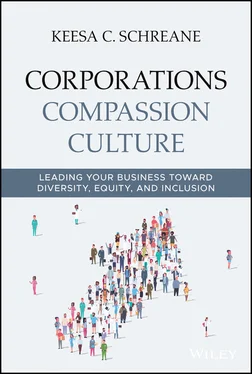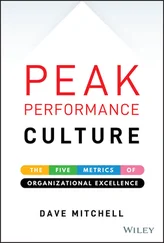This is a good analogy for what is happening with traditional corporate culture. Decades of lack of equity, lack of inclusion, and inequality are slowly shifting the course of business toward a culture of fairness and ethics in employee treatment. Changing the way we do business and how we interact with employees has been a slow process. Yet, it remains an imperative one.
As we enter the post-COVID-19 and Black Lives Matter (BLM) era, the move toward a new compassionate culture, with equality and inclusion as a foundation, is even more urgent. A compassionate culture empowers people to develop new ways to solve business problems and deliver solutions. For employees to tap into these higher levels of learning, creating, and working, they must feel valued, included, and treated ethically.
Compassion in business means creating a culture in which equality, inclusion, and kindness are foundational principles, integrated at every level. Through a compassionate culture, employees have the agency to bring creativity, innovation, intelligence, and imagination to their jobs.
A business can't be compassionate if it's not willing to practice equality and inclusion. Equality and inclusion are not the same as compassion, but they do go hand-in-hand. They complement each other. Practically speaking, companies that embrace decent pay, diverse hiring, inclusive language, and ethical behaviors likely have compassionate cultures.
Just how seriously have corporate leaders taken their responsibility to be compassionate, just, and equality-focused up until now? The data speaks for itself:
2014: Facebook admits it has “more work to do” in recruiting after reporting 74% of their US senior workforce is White and 77% is male.
2019: Five years later, Facebook has a US senior workforce that is 65% White, 25% Asian, and 67% male; all other ethnicities still report single digits.
2019: Uber expects a near $90 billion initial public offering (IPO), even as their drivers strike over low pay.
2019: Hundreds of McDonald's workers in US and UK cities staged walkouts over low wages, as well as made accusations that the fast-food giant had an unsafe work environment and allowed sexual harassment to take place. 1
2020: Black workers at Adidas protested outside the sportswear company's US headquarters in Portland, Oregon, saying they had experienced racial discrimination in the workplace—this despite the company brandishing a public image of being antidiscrimination. 2
Organizations that represent the global corporate world (such as the World Economic Forum and Business Roundtable) have given us hope that the old ways of doing business are changing, based on statements they've made. For example, in 2019, the Business Roundtable's updated commitment noted the following:
Investing in our employees. This starts with compensating them fairly and providing important benefits. It also includes supporting them through training and education that help develop new skills for a rapidly changing world. We foster diversity and inclusion, dignity and respect. 3
Employees, suppliers, communities where businesses are located, and even organizations and governments are all invested in the business world. Whether they realize it or not, they all have a stake in corporate diversity, equity, inclusion, and commitments to dignified, respectful treatment of others.
Diversity is a term used to describe a workplace composed of employees with varying characteristics, such as sex, gender, race, ethnicity, sexual orientation, and disability. 4
Inclusion refers to a workplace environment where the diverse backgrounds and perspectives of individual workers are embraced and respected, which promotes equivalent access to opportunities and the full contribution of employees to the organization's success.
Workplace equality involves providing the same level of opportunity and assistance to all employees, regardless of gender, race, ethnicity, sexual orientation, disability, and so on. This includes pay equality when women and men are paid at the same rate for performing the same job.
Equity, involves providing people what they need to make things fair, and it naturally evolves from a workplace that promotes and maintains diversity, inclusion, and equality. 5
Employees and suppliers are invested because they work at the companies. Communities are invested because they share natural resources with the companies. Organizations and governments depend on companies' partnerships to support societal change.
People invested in positive, forward-thinking movements in the business world hope that words like those just defined would be followed by deliberate action. But just when employees, suppliers, and communities thought companies would do better, many actually got worse.
In recent years, employees have become emboldened and louder about fighting infractions and inequities in the corporate world. Walkouts have become more orchestrated. Workers have protested unfair pay in an almost synchronistic style across regions. Demands for racial justice have grown more sophisticated. Brands have been persuaded to show solidarity as racial justice activists leveraged the power of advertising to hit the digital economy in a new way. Factory workers unapologetically raised their voices at feeling coerced to work in environments they felt were unsafe during the COVID-19 pandemic. Rather than fearing potential retaliation, these workers demonstrated their faith that the wider society would support their demands for greater protections.
For example, Shipt, a same-day delivery service owned by Target Corporation, came under fire for lowering its delivery drivers' pay amid the COVID-19 pandemic in 2020—a time when home delivery of groceries and consumer goods was surging. Workers protested the pay cuts with walkouts and work stoppages, arguing that it was wrong to reduce their pay when making deliveries posed a health risk. Earlier in the year, Shipt workers had also staged walkouts over the company not providing its drivers with the protective gear they needed to make deliveries safely. 6
Walkouts and other strategic actions grew out of the need to implore corporations to change unethical behaviors, pay people fairly, and stop discriminatory practices. Put simply, these actions were laying the groundwork for compassionate activism in the workplace.
This activism was embraced and supported by some in the corporate world, but others refused to commit to the cause. At Tyson Foods, for instance, over 4,500 workers were diagnosed with COVID-19 and 18 died from the illness. Despite this, the company still refused to offer paid sick leave, instead opting to “relax attendance policies and update disability policy.” 7 However, there were bright lights that penetrated the dark times.
Many corporations broadened health care access to include mental health and well-being services. In spring 2020, Starbucks started offering 222,000 of its US employees up to 20 free counseling sessions with a mental health therapist. 8 The insurance company AIA uses a digital screening program to check its employees for depression, stress, and anxiety and offers them a quarterly “recharge day.” As Damien Mu, AIA's CEO for Australia and New Zealand, told Financial Review, “The unintended consequence of being high energy and working hard is the team thinks that is what is required to succeed. What they don't see is the down time we all need and that you are not always up.” 9
During the 2020 economic downturn, some firms made commitments to retain employees and did so with creativity. Instead of laying off employees during the pandemic, Verizon made the commitment to retrain 20,000 workers for different careers within the company. 10 During the Great Recession that started in 2008 and the 2020 pandemic, many companies furloughed employees rather than laying them off—a strategy that assists with a company's short-term cash crunch, while still providing employees with benefits.
Читать дальше












